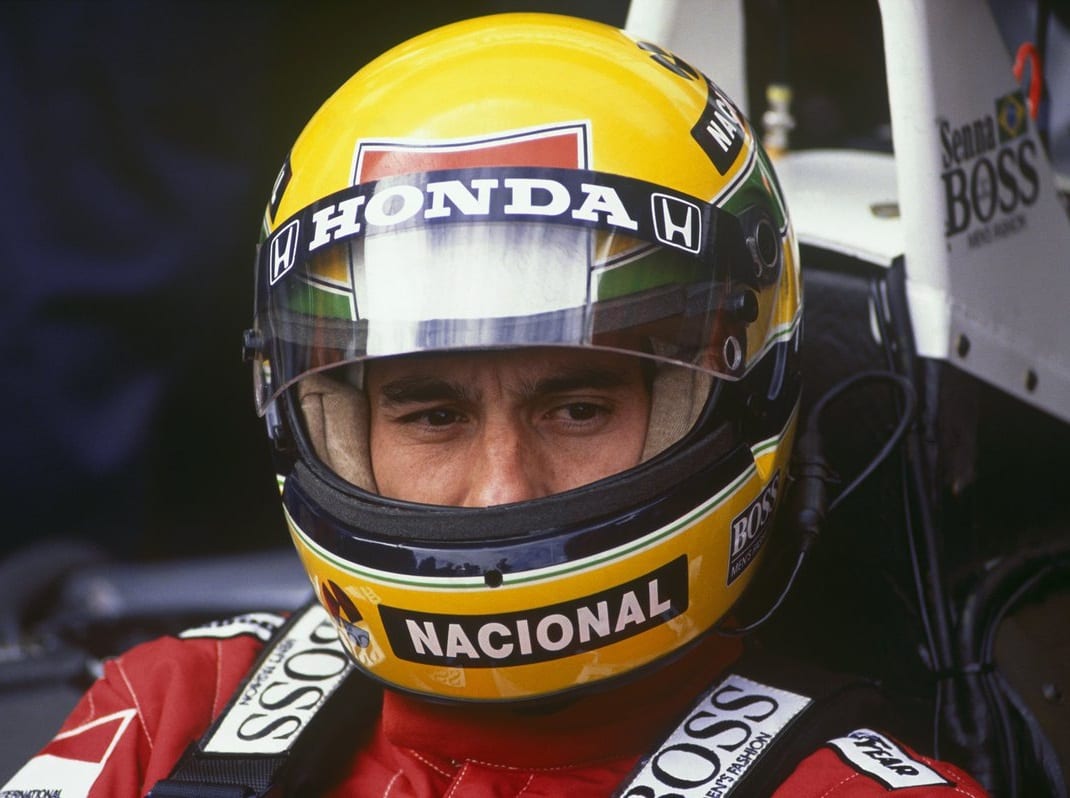
MOORESVILLE, N.C. – I don’t have any memories of three-time Formula One champion Ayrton Senna actually racing, considering I was barely four months old when he was killed in Imola.
However, that doesn’t mean that I haven’t read up on my racing history. I understand from old writings and what video exists from that time period not only how good Senna was, but how big of an impact he had.
Senna was to Formula One what Dale Earnhardt was to NASCAR during that time period. Both were larger-than-life figures who held their respective sports’ fan bases in the palms of their hands.
Even if you didn’t follow Formula One, chances are, you at least knew the name Ayrton Senna, much like even casual NASCAR fans knew the name Dale Earnhardt over the years.
He was one of the best pure talents there ever was, that was evident from the very beginning. Whether it was the 1984 Monaco Grand Prix – the win that should have been but never was – or his lap from “a different dimension” at the same track four years later, or even his final moments leading the field at Imola, it was always clear Senna was special.
Forty-one Grand Prix victories, 65 pole positions and three championships only served to back up his visibly immense driving talent, which was tragically lost on that black Sunday a quarter century ago.
But in the wake of his passing came a two-fold legacy that has become mountainous as the years have gone on, not just in Formula One lore but across the entire scope of motorsports across the globe.
The first side of the coin is his inspiration on the drivers of today. If Senna was a racing hero before his death, that view was only magnified many times over after his passing.
All it takes is a look down social media to see the impact of Senna on the current F-1 grid, starting right at the top with five-time world champion Lewis Hamilton.
Hamilton has always circled Senna as his inspiration and childhood hero in racing and has authored many tributes to the Brazilian over the course of his own career. Perhaps among the most notable moments was when Hamilton matched Senna’s pole total in F-1 competition and was later presented a race-worn helmet of Senna’s by the Senna family.
“Ayrton, I know for so many was their favorite driver, and he was for me as well,” Hamilton said at the time. “He inspired me to be where I am today.”
That inspiration was equally as evident on Wednesday’s anniversary, when Hamilton offered a written tribute to Senna on social media.

“I remember sitting there, right next to me Dad and watching him on the television from the age of four or five (years old),” Hamilton wrote. “Ayrton, the way he raced captivated me from the very beginning and drew me closer to this incredible sport. He was a pure, out-and-out racer, a true master and a hero.
“It’s been 25 years since he was taken from us, but he will live on for eternity.”
Racing Point’s Sergio Perez also paid a nod to Senna on Wednesday, noting that he wished to have raced against the legendary Brazilian.
“I would have loved to share notes with you,” wrote Perez on Twitter. “Your way of being in and out of the tracks made you my only idol and role model in the sport. Thanks Ayrton.”
But beyond just the inspirations he has given to the drivers of today, the other long-living side of Senna’s legacy that emerged in light of his death were improvements in safety that came in light of that grim weekend.
The death of fellow driver Roland Ratzenberger in Saturday qualifying at Imola, followed by Senna’s accident, later led to the implementation of the HANS device in F-1, much like Earnhardt’s death led to a similar push in NASCAR competition as well.
Redesigns to the cars themselves came as well – particularly with the addition of the “plank,” which lessens the ability of cars to utilize ground effect and remains an integral part of Formula One car designs to this day – followed by changes to circuit designs and protective fencing that helped ease the risk for spectators and drivers alike.
If there was one other facet to the Senna legacy that is as evident today as it ever was in 1994, however, it’s his fierce competitive nature and never-say-die spirit that is remembered just as much as any statistical mark he ever set during his career.
That was emphasized by his now-immortal words from November of 1990, said to Sir Jackie Stewart in an interview that has been played over innumerable times since then.
“If you no longer go for a gap, then you are no longer a racing driver,” Senna said.
But a driver he was, right to the very end. That legacy has lived on in all the years since.
